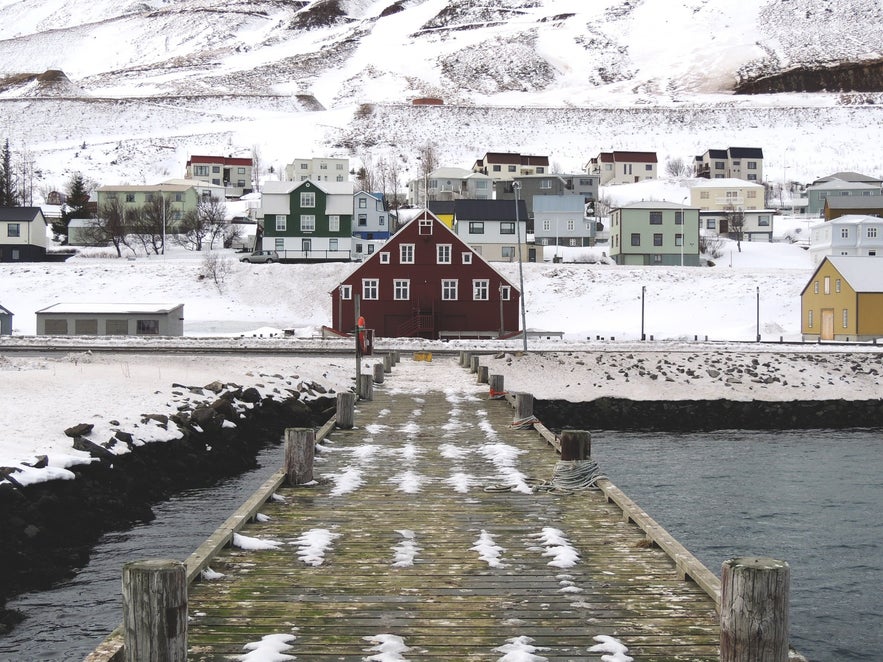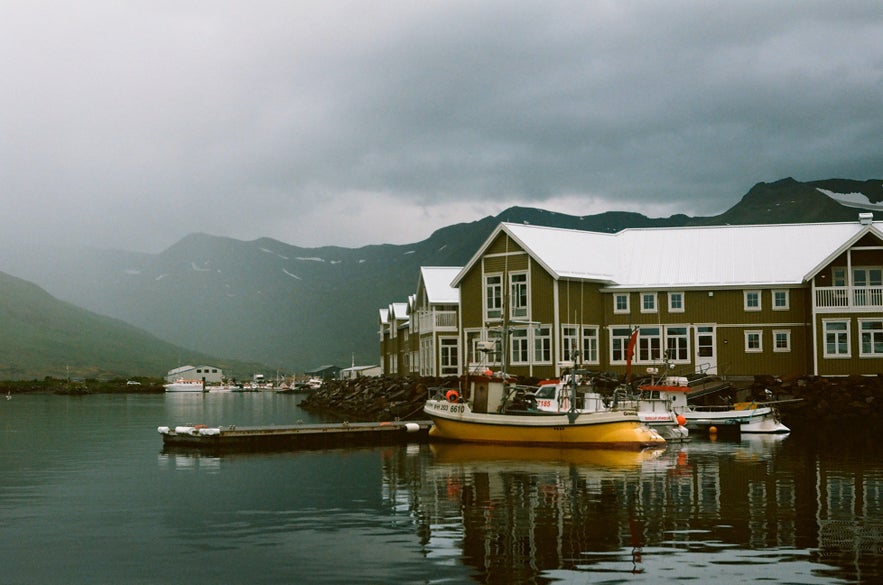
Siglufjordur to miasteczko liczące około 1300 mieszkańców, położone w północnej Islandii. Jest to najbardziej wysunięte na północ miasto na stałym lądzie Islandii.
Najlepszym sposobem na odwiedzenie Siglufjordur jest spokojna wycieczka objazdowa samochodem. Jedną z najlepszych opcji jest 7-dniowa samodzielna podróż trasą Arktycznego Wybrzeża, dostępna w miesiącach letnich.
Dlaczego możesz nam zaufać
Guide to Iceland to najbardziej zaufana platforma turystyczna na Islandii, pomagająca milionom odwiedzających każdego roku. Wszystkie nasze treści są tworzone i sprawdzane przez lokalnych ekspertów, którzy doskonale znają Islandię. Możesz liczyć na rzetelne, aktualne i wiarygodne porady podróżnicze.
Oprócz walorów przyrodniczych jest to również ośrodek kulturalny z wielokrotnie nagradzanym Muzeum Ery Śledzia, Muzeum Muzyki Ludowej i Festiwalem Muzyki Ludowej, który z roku na rok przyciąga coraz większą liczbę turystów. To urokliwe miasteczko, które warto zwiedzić, więc jeśli planujesz tu pobyt, koniecznie zarezerwuj nocleg w Siglufjordur.
Autor zdjęcia: Luciano Braga
Gospodarka
Siglufjordur posiada jeden z najlepszych portów na Islandii, a przemysł rybny od dawna stanowił podstawę lokalnej gospodarki. Podobnie jak w całym kraju, w ostatnich latach coraz większe znaczenie zyskują usługi i turystyka.
Od czasu otwarcia tuneli przez fiord Hedinsfjordur w 2010 roku miasteczko stało się znacznie łatwiej dostępne dla podróżujących islandzką obwodnicą lub zatrzymujących się w północnym mieście Akureyri. W ostatniej dekadzie liczba odwiedzających znacznie wzrosła.
Historia i kultura
 Autor zdjęcia: Alena Timofeeva
Autor zdjęcia: Alena Timofeeva
Siglufjordur ma burzliwą historię, zwłaszcza w ostatnich latach. Na początku XX wieku z małej wioski szybko przekształciło się w miasto, które uzyskało prawa miejskie w 1918 roku. W połowie XX wieku stanowiło jeden z największych ośrodków na wyspie.
W tym okresie Siglufjordur było stolicą połowów śledzi na północnym Atlantyku, a muzeum rybołówstwa dumnie prezentuje tę historię. Można tu dowiedzieć się, jak ważne było morze dla przetrwania Islandczyków, od czasów osadnictwa aż po współczesność.
Muzeum Ery Śledzia to jedno z największych muzeów morskich i przemysłowych w kraju. Składa się z trzech budynków: w jednym poznasz historię połowów i przetwórstwa, w drugim zobaczysz liczne statki i łodzie z lat 50., a stara stacja solenia zachowała swój dawny wygląd – w pogodne letnie dni można tu zobaczyć proces solenia śledzi na żywo.
W dawnej fabryce Grana dowiesz się, jak śledzie były przetwarzane na mączkę i olej.
Centrum Muzyki Ludowej to kolejne ważne miejsce kultury, mieszczące się w domu pastora Bjarniego Thorsteinssona, zwanego „Ojcem Siglufjordur”. To tutaj ożywają stare islandzkie pieśni ludowe – można posłuchać nagrań śpiewu wielogłosowego (tvisongur), recytacji epickich rymów (rimur), gry na langspil oraz tradycyjnych kołysanek.
Centrum prezentuje także życie pastora Bjarniego.
Festiwal Muzyki Ludowej
Na początku lipca w Siglufjordur odbywa się coroczny Festiwal Muzyki Ludowej, podczas którego prezentowana jest muzyka ludowa z różnych krajów, ze szczególnym naciskiem na tradycje islandzkie. W programie są wykłady, warsztaty muzyczne i rękodzielnicze, a także tańce, koncerty i zabawy.
Natura
Siglufjordur leży w wyjątkowo pięknym fiordzie o tej samej nazwie, otoczonym wysokimi, malowniczymi górami. W okolicy występuje wiele ptaków – latem można tu spotkać około 2000 ptaków z 16–18 gatunków.
Popularne szlaki piesze prowadzą przez przełęcze Holsskard i Hestskard do pięknego fiordu Hedinsfjordur, do którego można dotrzeć także łodzią lub samochodem.
Opuszczony fiord Hedinsfjordur otaczają strome, imponujące góry, a w dolinie znajduje się malownicze jezioro Hedinsfjardarvatn, znane z dobrych połowów pstrąga.
Ostatnie gospodarstwo w Hedinsfjordur zostało opuszczone w 1951 roku. W XX wieku zwykle funkcjonowało tu pięć farm, ponieważ bogata roślinność i dostęp do morza zapewniały pożywienie. Zimy były jednak surowe, często dochodziło do lawin, a fiord był trudno dostępny, dlatego dziś nie ma tu już żadnych gospodarstw.
Na północny wschód od Hedinsfjordur znajdują się pozostałości jednej z najbardziej odosobnionych farm na Islandii – Hvanndalir. Można tam dotrzeć z Hedinsfjordur, ale tę trasę polecamy wyłącznie doświadczonym piechurom w towarzystwie przewodnika, ponieważ prowadzi przez osuwisko skalne.









